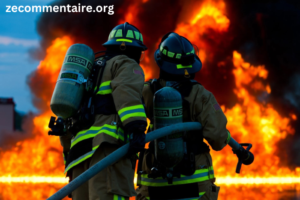Today’s industry is evolving rapidly. Safety is a top priority for companies. Ensuring that operations follow OSHA regulations is crucial.
One key component in achieving this compliance is effective safety staffing. Safety staffing involves placing qualified safety professionals in an organization. They oversee, implement, and maintain safety protocols.
This article explores the key role of safety staffing in maintaining OSHA compliance. It also highlights the need for having dedicated safety professionals.
Understanding OSHA Compliance
Before delving into the specifics of safety staffing, it is important to understand what OSHA compliance entails. OSHA is a federal agency under the Department of Labor. It sets and enforces standards to ensure safe and healthful working conditions.
Compliance with these standards is mandatory for most employers. OSHA regulations cover a wide range of workplace safety aspects, including:
- hazard communication
- personal protective equipment (PPE)
- emergency action plans
- machine guarding
- Electrical safety
- hazardous materials handling
Breaking OSHA rules can lead to big penalties that include heavy fines and possible shutdowns. Moreover, not complying can cause accidents. This can harm workers and the company’s reputation.
Key Functions of Safety Staffing
Safety staffing ensures compliance with OSHA rules. It also keeps the workplace safe for employees. Some of the key functions of safety staffing include:
Risk Assessment and Hazard Identification
One key task for safety staff is to do thorough risk assessments and spot potential workplace hazards. Safety pros are trained to catch both obvious and sneaky risks that untrained folks might miss. They use different tools to check the work setting, machines, and processes, making sure all risks are handled.
Developing and Implementing Safety Protocols
After spotting risks, the next move is setting up solid safety rules. Safety staffing makes sure these rules are detailed and fit the organization’s needs. This involves:
- making safety manuals
- running training sessions
- setting up emergency response plans
With safety experts on board, companies can make sure these rules are top-notch and kept up-to-date with new risks or rules.
Training and Education
Ongoing training and learning are key to keeping our workplace safe. Safety staff create and run training programs. They use them to teach our team about safety, using equipment right, and what to do in emergencies
These sessions help build a safety-focused culture. They ensure it makes everyone more alert and proactive in accident prevention.
Monitoring and Compliance Audits
To stay OSHA compliant, it’s important to keep an eye on things and do regular checks. Safety staffing means ongoing inspections to make sure safety rules are followed and the workplace stays safe. These checks help find any slip-ups in following the rules and give a chance to fix them quickly, avoiding violations and accidents.
Incident Investigation and Reporting
In case of an accident, having safety staff is super important for digging into what caused it. Safety pros analyze the incident and spot contributing factors. They come up with ways to prevent it from happening again.
Plus, they take care of reporting to OSHA. They make sure all the legal stuff is covered and the organization stays open and responsible.
The Benefits of Safety Staffing
Having a dedicated safety staff has many benefits for both employees and employers.
Enhanced Workplace Safety
The most clear benefit of safety staffing is enhanced workplace safety. By having dedicated safety professionals, companies can proactively identify and mitigate risks. Thus, reducing the likelihood of accidents and injuries.
This protects workers and boosts morale and productivity. This way, workers feel more secure.
Legal and Financial Protection
Compliance with OSHA regulations is not optional. Failure to comply can result in significant legal and financial repercussions. Safety staffing helps companies stay ahead of regulations. It ensures that they are always in compliance.
This proactive approach can save businesses from:
- costly fines
- legal battles
- reputational damage
Improved Efficiency and Productivity
A safe workplace is a more efficient and productive workplace. A company must ensure that safety protocols are in place and are followed. This approach causes fewer disruptions from accidents or unsafe practices.
Safety staffing ensures that these rules are always applied. This leads to smoother operations and better performance.
The Role of Safety Consulting in Metropolitan Areas
Businesses in such cities as New York can benefit from specialized safety consulting services. Specific safety consulting in New York provides expert guidance. It is tailored to the area’s unique challenges and regulations.
The consultants can help with safety staffing. They can do this by offering their expertise in risk assessment, training, and compliance audits.
Local safety consultants can help businesses improve their unique safety programs. They can ensure the programs meet federal and state rules.
Challenges in Safety Staffing in Urban Areas
One of the main challenges for businesses in metropolitan areas is finding qualified safety staff. With high demand and competition, it can be difficult to attract top talent.
Finding Qualified Professionals
A big challenge in safety staffing is finding qualified safety pros. The demand for these experts often exceeds the supply, making it difficult for organizations to fill these critical roles.
To beat this challenge, businesses may need to invest in training. They should make programs to grow internal talent. Or, they can partner with safety consulting firms.
Keeping Up with Regulatory Changes
OSHA regulations are continually evolving, and staying current with these changes can be daunting. Safety staffing must include professionals who know current rules and work to stay up-to-date on new ones. This ensures that the safety protocols remain compliant and effective.
Balancing Cost and Benefits
While the benefits of safety staffing are clear, some organizations may struggle with the associated costs. Hiring and keeping a team of safety professionals is costly. This is especially true for smaller businesses.
But, not having accidents, fines, and shutdowns has long-term benefits that outweigh the initial cost. Companies need to assess their needs. They must divide resources to balance cost and safety well.
Conclusion: The Indispensable Role of Safety Staffing
In conclusion, safety staffing is vital to maintain OSHA compliance and ensure workplace safety. Safety professionals conduct risk assessments. They develop and put in place safety protocols, give training, and do audits.
They also help companies navigate OSHA regulations. Safety staffing has many benefits. These include better safety, legal protection, and improved productivity.
They far outweigh the challenges and costs. In the end, investing in safety staffing is not just about following rules. It’s about protecting an organization’s most valuable asset: its people.
Want to learn more? Check our blog for informative articles.






